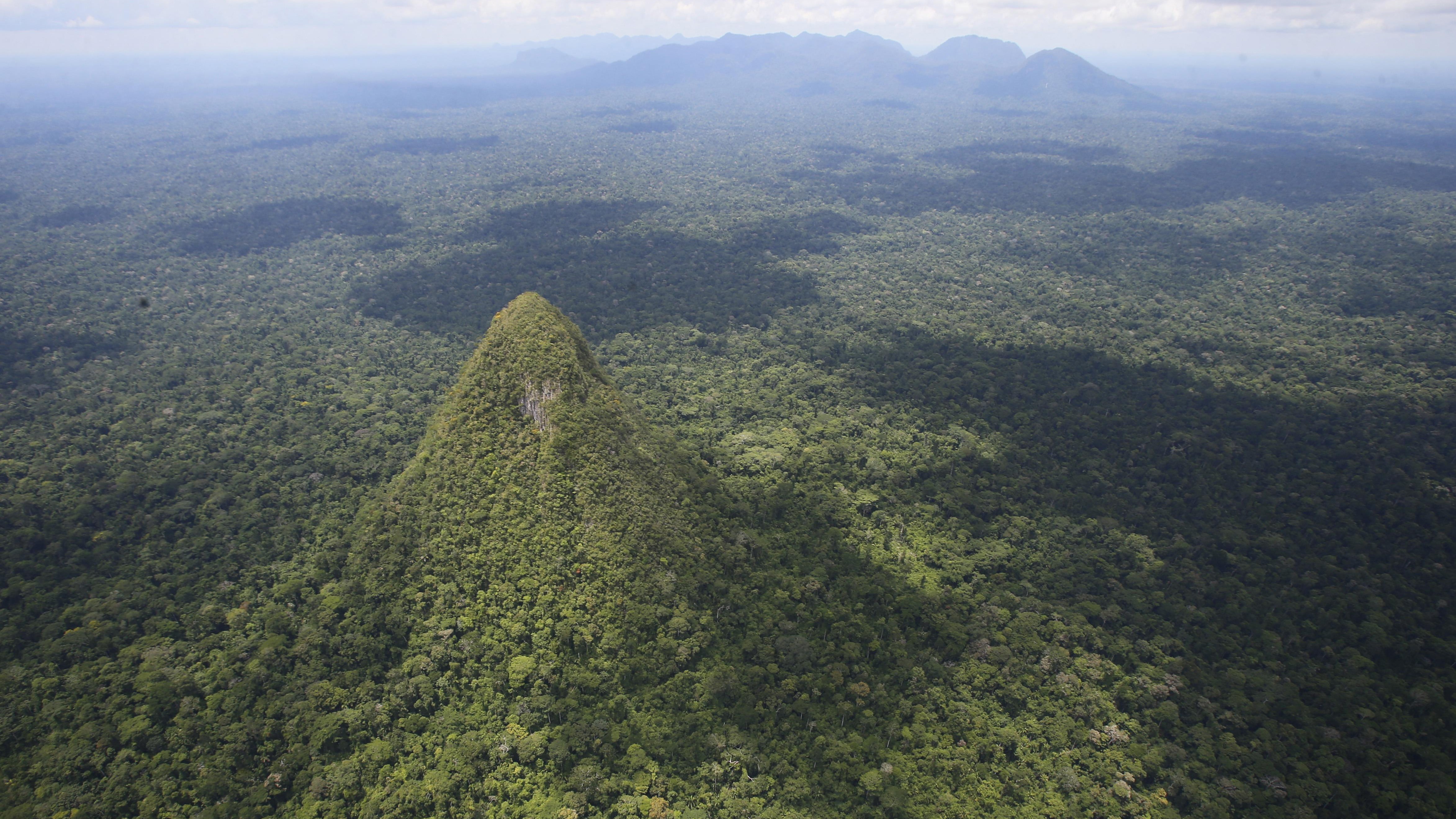El Cono: The mysterious sacred 'pyramid' hidden deep in the Amazon rainforest
Cerro El Cono is a solitary, pyramidal hill in the Peruvian Amazon rainforest whose origins remain mysterious and that holds spiritual significance for Indigenous people.

Name: Cerro El Cono, also known as "Montaña Cónica"
Location: Sierra del Divisor, Peruvian Amazon rainforest
Coordinates: -7.963010971488621, -73.78224313086483
Why it's incredible: El Cono stands alone in the rainforest and has a mysterious pyramidal shape.
Cerro El Cono is a 1,310-foot-tall (400 meters), pyramid-like formation in the Amazon rainforest. It rises steeply from the relatively flat jungle landscape of eastern Peru, making it visible from as far west as the Andes — 250 miles (400 kilometers) away — on a clear day.
The formation, whose name translates to "cone hill," is located in a mountainous region on the border between Peru and Brazil known as the Sierra del Divisor. The mountains are visible in the background of most photographs of Cerro El Cono, but the formation is isolated from the other peaks and has an unusual pyramidal shape, making it stand out from the rest of the mountain range.
The origins of the strange peak have remained mysterious due to its remote location. While some sources suggest that the cone could be an extinct volcano, others say it might simply be an unusual rock formation.
Indigenous people have another explanation for the bizarre mountain: According to the Peruvian newspaper La República, Cerro El Cono is a spiritual entity for local tribes and groups, some of which revere the peak as an "Andean Apu" — a sacred mountain god or spirit. In the mythologies of Peru, Bolivia and Ecuador, Apus emerged from Earth to guide and protect the people living close by.
A fourth explanation — one for which there is no evidence — is that Cerro El Cono sits on the ruins of a pyramid built by ancient Indigenous tribes, according to La República.
Cerro El Cono stands adjacent to the Ucayali River, which is a major tributary of the Amazon River. The surrounding jungle is a biodiversity hotspot and home to several vulnerable species, including giant armadillos (Priodontes maximus), jaguars (Panthera onca) and various types of monkeys, according to The Guardian. The peak itself is forested and forms part of a large area that has been considered a biodiversity conservation priority since the 1990s.
Get the world’s most fascinating discoveries delivered straight to your inbox.
Concern that this ecosystem may become degraded by infrastructure, illegal logging and gold mining prompted the creation of the Sierra del Divisor National Park in 2015. But recent surveys indicate that the protected park, which is 1.5 times the size of Yellowstone National Park, has not removed threats from illegal deforestation and wildlife poaching.
Discover more incredible places, where we highlight the fantastic history and science behind some of the most dramatic landscapes on Earth.

Sascha is a U.K.-based staff writer at Live Science. She holds a bachelor’s degree in biology from the University of Southampton in England and a master’s degree in science communication from Imperial College London. Her work has appeared in The Guardian and the health website Zoe. Besides writing, she enjoys playing tennis, bread-making and browsing second-hand shops for hidden gems.
You must confirm your public display name before commenting
Please logout and then login again, you will then be prompted to enter your display name.


